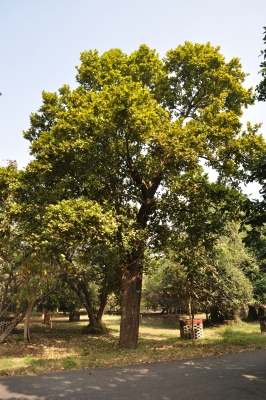Uttarakhand
Khalanga Reserve Forest
- 25 Jun 2024
- 3 min read
Why in News?
Recently, Local residents of Dehradun united to save 2,000 Sal trees in Khalanga Reserve Forest. Due to public protest against tree felling, the state government will relocate the planned drinking water plant from the forest.
Key Points
- Environmental activists protested the marking of 2000 Sal trees in Khalanga Reserve Forest for the Song Dam drinking water project, causing deep annoyance among locals who started protesting against the project.
- A social media campaign was launched to spread awareness and some groups tied Raksha-Sutras to the trees for protection.
- A drinking water project worth Rs. 524 crores will be built under the Song Dam project in Dehradun, with an estimated total cost of 3000 crores.
- The project includes the construction of a reservoir near the Song Dam and a 150 MLD (Megaliters Per Day) water treatment plant on 4.2 hectares of land.
- The project aims to supply drinking water to 60 wards of the capital from Kanar village, ultimately helping Dehradun's 60 wards.
Sal Tree
- Shorea robusta, the sal tree, is a species of tree in the family Dipterocarpaceae.
- The tree is native to India, Bangladesh, Nepal, Tibet and across the Himalayan regions.
- Description
- It can grow up to 40 metres tall with a trunk diameter of 2 metres.
- The leaves are 10–25 cm long and 5–15 cm broad.
- In wetter areas, sal is evergreen; in drier areas, it is dry-season deciduous, shedding most of the leaves from February to April, leafing out again in April and May.
- The sal tree is known also as sakhua in northern India, including Madhya Pradesh, Odisha and Jharkhand.
- It is the state tree of two Indian states – Chhattisgarh and Jharkhand.
- Culture
- In Hindu tradition, the sal tree is sacred. It is also associated with Lord Vishnu.
- The tree's common name, sal, comes from the word shala, which means 'rampart' in Sanskrit.
- Jains state that the 24th tirthankara, Mahavir, achieved enlightenment under a sal tree.
- Some cultures in Bengal worship Sarna Burhi, a goddess associated with sacred groves of Sal trees.
- Buddhist tradition holds that Queen Māyā of Sakya gave birth to Gautama Buddha while grasping the branch of a sal tree or an Ashoka tree in a garden in Lumbini in south Nepal.
- Also according to Buddhist tradition, the Buddha was lying between a pair of sal trees when he died.





